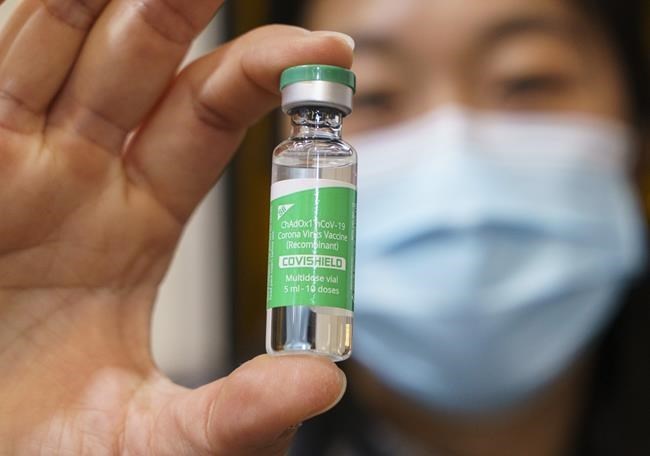OTTAWA — The national advocacy group for patients with blood-clot disorders says there is a greater risk of getting blood clots from COVID-19 than there is from the vaccine.
Thrombosis Canada issued an updated statement on the risk of blood clots late Thursday, after the European Medicines Agency released its final report on the risk of blood clots after getting the Oxford-AstraZeneca vaccine.
The agency says there is no evidence of increased risk of blood clots from the vaccine, but added there is still not enough evidence to say if the vaccine played a role in a small number of clots in the vein that drains blood from the brain.
Dr. Theresa Tam, Canada's chief public health officer, said further analysis is ongoing in Canada and around the world.
"Overall, the benefits of the AstraZeneca COVID-19 vaccine and protecting Canadians from COVID-19 continue to outweigh the risks," she said.
Thrombosis Canada, whose board is made up of physicians specializing in blood clots, says the incidence of those clots, known as cerebral sinus vein thrombosis, occurred at a rate between one in 250,000 and one in 500,000 people who received the vaccine.
By comparison, they say blood clots occurred in about one in 20 people hospitalized with COVID-19 and about one in 100 patients who have COVID-19 but were not hospitalized.
Dr. James Douketis, president of Thrombosis Canada and a blood clot specialist at St. Joseph's Healthcare in Hamilton, said it can be hard to reconcile the risk of a serious complication like a blood clot but he said it is an extremely rare reaction.
Douketis said this isn't just any drug on the market either.
"We're dealing with a vaccine in the middle of a pandemic that can help potentially millions and millions of people, in many ways, not least of which is preventing blood clots related to COVID," he said.
At least four European countries that halted AstraZeneca injections pending the review are resuming them, with France, Germany and Italy restarting the vaccinations today and Spain planning to do so next week.
French Prime Minister Jean Castex rolled up his arm to get his dose of AstraZeneca in front of the cameras Friday to try and restore confidence in the vaccine.
British Prime Minister Boris Johnson did the same.
"The Oxford jab is safe, and the Pfizer jab is safe," Johnson said Thursday before getting his injection. "The thing that isn't safe is catching COVID, which is why it is so important that we all get our jabs as soon as our turn comes."
Johnson was infected with COVID-19 last year and spent several days in intensive care last April.
Canada has only received about 500,000 doses of AstraZeneca so far, but anticipates getting 1.5 million more from the United States before the end of the month. Canada is to receive almost 24 million doses of AstraZeneca through different channels, including 20 million directly from the company made at a Maryland production facility, two million from the Serum Institute of India, and another 1.9 million from the global vaccine sharing initiative known as COVAX.
More than three million Canadians have now received at least one dose of vaccine, or about eight per cent of the population. There are to be enough doses delivered to get every adult one dose by the end of June, and a second dose by the end of September.
Most Canadian provinces are spacing out the second dose by up to four months to try and get more people one dose quicker.
Data released by Public Health England show in people over the age of 70, a single dose of either Pfizer or AstraZeneca had cut the risk of getting symptomatic COVID-19 infections by 60 per cent. In people over 80, the vaccines reduced hospitalization due to COVID-19 by 80 per cent and death by 85 per cent.
This report by The Canadian Press was first published March 19, 2021.
Mia Rabson, The Canadian Press



